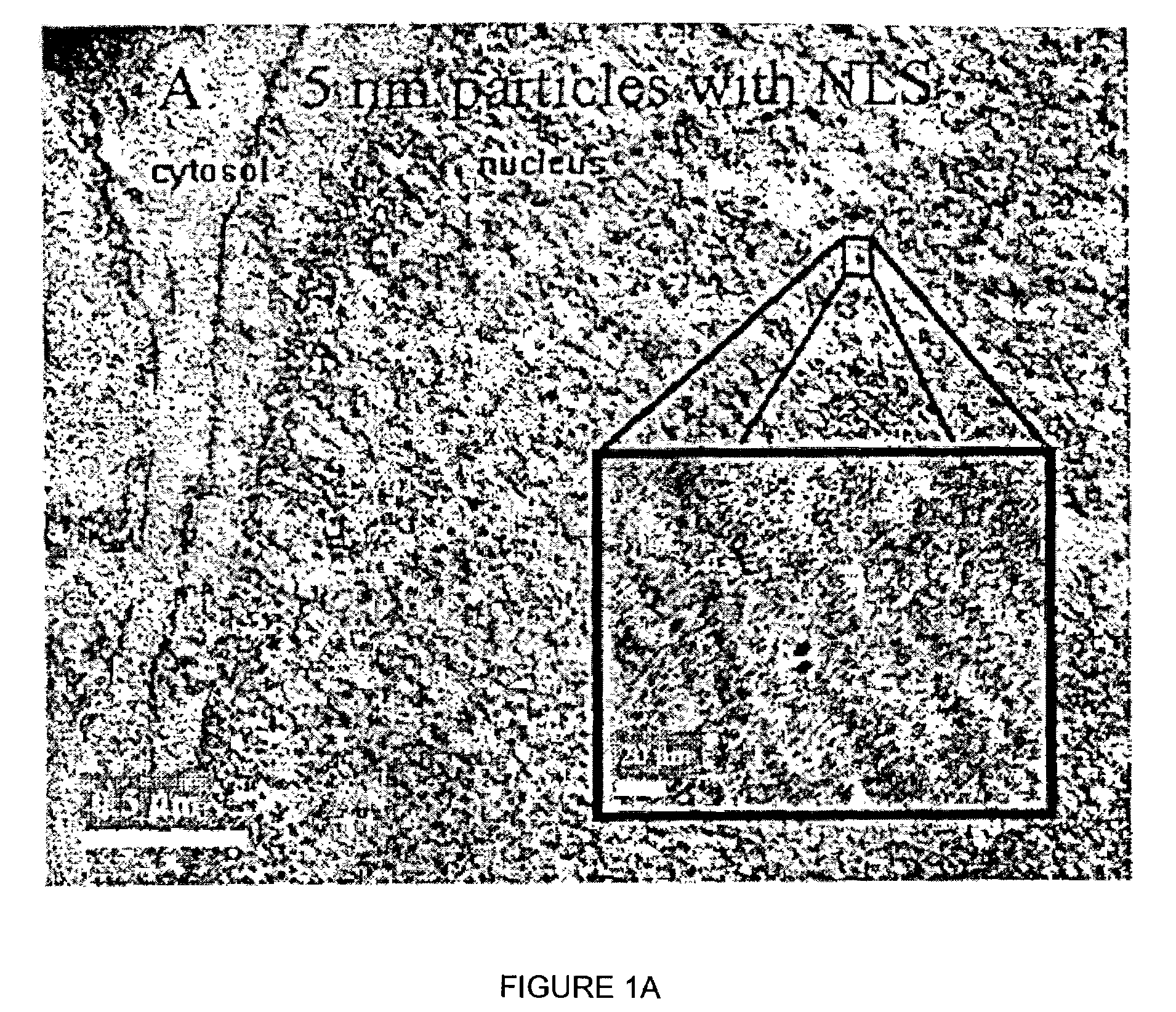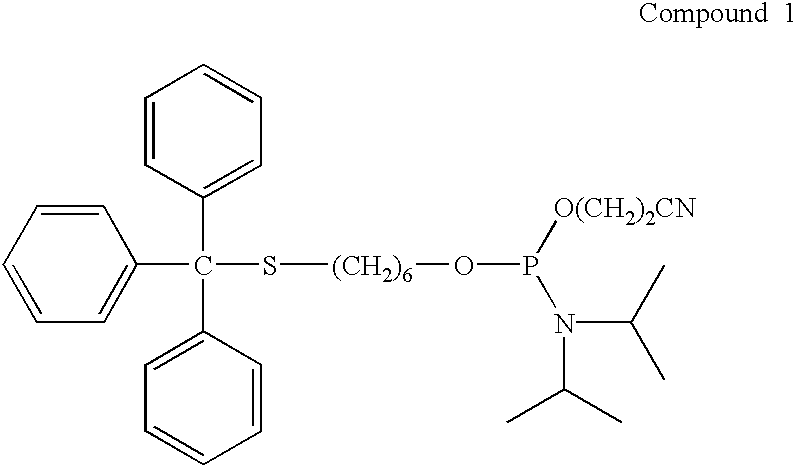Nanoparticle delivery vehicle
a technology of nanoparticles and delivery vehicles, which is applied in the direction of inorganic non-active ingredients, drug compositions, peptides, etc., can solve the problems of inability to design new and effective approaches for delivering therapeutic nucleic acids to cells and intracellular targets, undesired in vivo degradation, and lack of specificity for a given target structur
- Summary
- Abstract
- Description
- Claims
- Application Information
AI Technical Summary
Benefits of technology
Problems solved by technology
Method used
Image
Examples
Embodiment Construction
[0024]The present invention provides a nanoparticle delivery vehicle as a vehicle for carrying proteins, nucleic acids, protein and nucleic acid analogs, small molecules and other compounds to the surface of a cell, into the cytoplasm of a cell and / or into a cell's nucleus. A plurality of sequences can be associated with a nanoparticle delivery vehicle, preferably a plurality of different sequences, such as RME sequences and NLS sequences. These sequences can aid in the translocation of a vehicle across various membranes, such as the nuclear membrane of a cell or the outer membrane of a cell. Thus, if membranes and other structures that generally inhibit translocation of a vehicle to a given location in or on a cell are analogized as “locks”, NLS and RME sequences can be analogized to be “keys”. Thus, in a preferred embodiment, a nanoparticle delivery vehicle of the present invention can comprise a plurality of different sequences or “keys,” which can enable a given nanoparticle del...
PUM
| Property | Measurement | Unit |
|---|---|---|
| Diameter | aaaaa | aaaaa |
| Diameter | aaaaa | aaaaa |
| Diameter | aaaaa | aaaaa |
Abstract
Description
Claims
Application Information
 Login to View More
Login to View More - R&D
- Intellectual Property
- Life Sciences
- Materials
- Tech Scout
- Unparalleled Data Quality
- Higher Quality Content
- 60% Fewer Hallucinations
Browse by: Latest US Patents, China's latest patents, Technical Efficacy Thesaurus, Application Domain, Technology Topic, Popular Technical Reports.
© 2025 PatSnap. All rights reserved.Legal|Privacy policy|Modern Slavery Act Transparency Statement|Sitemap|About US| Contact US: help@patsnap.com



